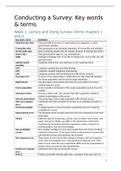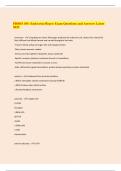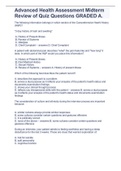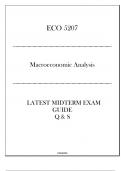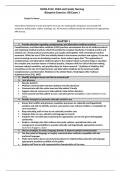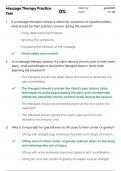Samenvatting
Summary List of key words and terms of all 'Conducting a Survey' material
This is an extensive list containing definitions of (almost) all key words and terms used in the material of the course 'Conducting a Survey' (lectures, Doing Surveys Online, and articles).
[Meer zien]
